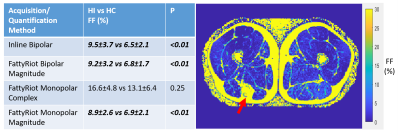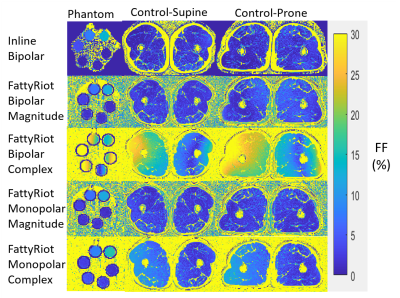Brendan L. Eck1,2, Richard Lartey1,3, Dongxing Xie1,3, Jeehun Kim1,3, Carl S. Winalski1,2,3, Bruce M. Damon4, Xiaodong Zhong5, Kecheng Liu5, Dimitris Karampinos6, Faysal Altahawi1,2, Morgan H. Jones1,7, Kurt P. Spindler1,7, and Xiaojuan Li1,2,3
1Program of Advanced Musculoskeletal Imaging, Cleveland Clinic, Cleveland, OH, United States, 2Diagnostic Radiology, Cleveland Clinic, Cleveland, OH, United States, 3Biomedical Engineering, Cleveland Clinic, Cleveland, OH, United States, 4Radiology and Radiological Sciences, Vanderbilt University Medical Center, Nashville, TN, United States, 5MR R&D Collaborations, Siemens Medical Solutions USA, Inc., Malvern, PA, United States, 6Department of Diagnostic and Interventional Radiology, School of Medicine, Technical University of Munich, Munich, Germany, 7Orthopaedic Surgery, Orthopaedics and Rheumatology Institute, Cleveland Clinic, Cleveland, OH, United States
1Program of Advanced Musculoskeletal Imaging, Cleveland Clinic, Cleveland, OH, United States, 2Diagnostic Radiology, Cleveland Clinic, Cleveland, OH, United States, 3Biomedical Engineering, Cleveland Clinic, Cleveland, OH, United States, 4Radiology and Radiological Sciences, Vanderbilt University Medical Center, Nashville, TN, United States, 5MR R&D Collaborations, Siemens Medical Solutions USA, Inc., Malvern, PA, United States, 6Department of Diagnostic and Interventional Radiology, School of Medicine, Technical University of Munich, Munich, Germany, 7Orthopaedic Surgery, Orthopaedics and Rheumatology Institute, Cleveland Clinic, Cleveland, OH, United States
Monopolar gradient acquisition and magnitude-based processing improved
fat fraction estimates. Vendor-independent magnitude-based processing and
vendor inline processing quantified elevated hamstring muscle fat fraction in ACL-reconstructed
legs.

Table
1. Comparison
of average fat fraction in hamstrings muscles in the injured leg (HI) versus
the contralateral leg (HC) across acquisition and quantification methods. Bold
and italics indicate statistically significant difference in FF (p<0.05).
Other muscle groups (quadriceps, other) were similarly compared but no
significant differences were observed. In patients with hamstring autograft
(right), substantial fatty infiltration was observed (red arrow).

Figure
2. Fat
fraction (FF) maps from quantification methods (rows) for phantom and control
at supine and prone positions (columns). Artifact is present in FattyRiot with
complex processing, which appears to be position-dependent as it is similar across
supine and prone orientations. Monopolar gradient with complex processing
appears to reduce the amplitude of the artifact, but the pattern persists. Inline
bipolar and FattyRiot monopolar magnitude are most consistent between subject
positions.
